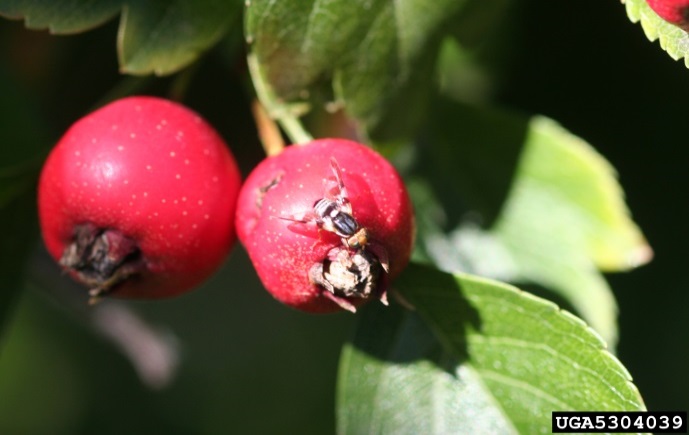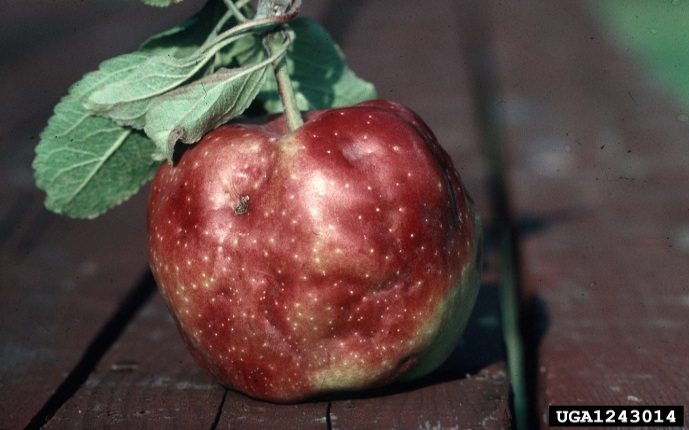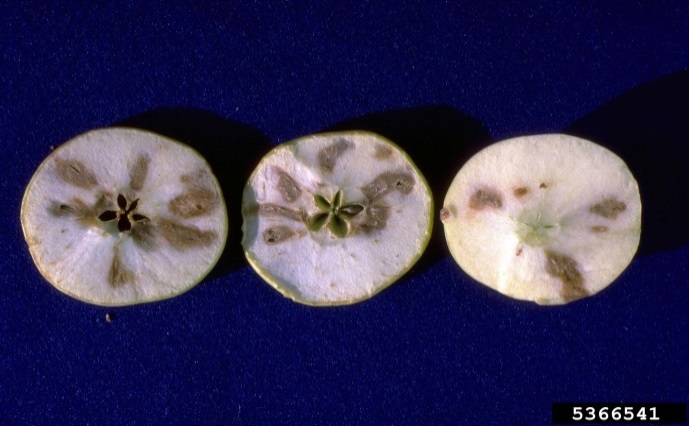
Apple maggot
| Primefact number | Edition | Published | Author |
|---|---|---|---|
| 1231 | Second | Apr 2017 | Plant Biosecurity and Product Integrity |



Apple maggot (Rhagoletis pomonella) is an exotic plant pest not present in Australia. This pest is a serious threat to Australia’s apple and stone fruit industries.
Apple maggot is a fruit fly. Apples are the preferred host although this fruit fly also attacks stone fruit.
Damage symptoms on fruit are similar to damage caused by Mediterranean fruit fly and Queensland fruit fly.
Notifiable status
Apple maggot (Rhagoletis pomonella) is a notifiable plant pest in NSW.
All notifiable plant pests and diseases must be reported within 1 working day. You can report notifiable plant pests and diseases by one of the following methods:
- Call the Exotic Plant Pest Hotline 1800 084 881
- Email biosecurity@dpi.nsw.gov.au with a clear photo and your contact details
- Complete an online form
A full list of notifiable plant pests and diseases can be found in Schedule 2 of the NSW Biosecurity Act 2015.
Damage
Apple maggot causes two types of damage to fruit. Damage caused by egg laying occurs around the site where the eggs are laid. The apple flesh stops growing which results in a sunken, misshapen, dimpled area on the outside of the fruit (Figure 2).
Internal damage is caused as the maggots (larvae) tunnel through the fruit. A single piece of fruit can be infested with many larvae. The pulp becomes honeycombed with brown rotting tunnels which break down the flesh (Figure 3). Infested fruit is unmarketable.
Description
The adult apple maggot fruit fly is 5 mm in length, with a wingspan of about 10 mm. Apple maggot flies are mostly black in colour with three or four white stripes across the body and a prominent white spot in the middle of the back. The wings are clear with four black bands shaped like the letter “F”.
Maggots are white and grow to about 7 mm in length.
Pupae are a yellow-brown colour, about 5 mm long and oval shaped. They resemble a grain of wheat.
Lifecycle
The apple maggot lifecycle has one generation per year. Pupae overwinter in the soil. Adults emerge during summer months especially after rain.
Female apple maggot begins laying eggs 7 to 10 days after mating. Eggs are laid singly just under the skin of ripening fruit.
Eggs hatch in 3 to 7 days. Young larvae start to feed immediately and burrow their way through the fruit. Larvae usually feed for 2 to 5 weeks depending on temperature.
Infested apples may drop prematurely. Larvae leave the fruit to pupate in the soil.
Host range
The primary host of apple maggot fruit fly is apple.
Secondary hosts include apricot, peach, sour cherry and hawthorn.
Spread
The main means of movement and dispersal of apple maggot to uninfected areas is transportation of infested fruit.
Apple maggot adults are able to fly short distances and may disperse from up to 100 metres in the presence of hosts or up to 1.5 kilometres when released away from an orchard.
Pupae can be transported in soil.
Distribution
Apple maggot is native to North America.
Railroad worm is an alternative common name in North America describing the type of damage seen in infested fruit.
Actions to minimise risks
Put in place biosecurity best practice actions to prevent entry, establishment and spread of pests and disease:
- practice “Come clean, Go clean”
- ensure all staff and visitors are instructed in and adhere to your business management hygiene requirements
- source propagation material of a known high health status from reputable suppliers
- keep records

